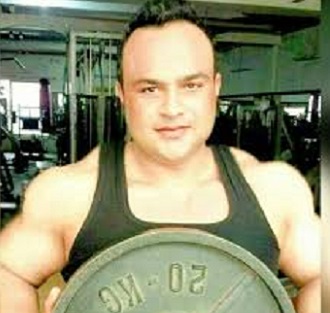Sustainable architecture is a design approach that seeks to minimize buildings' negative environmental impact by maximizing efficiency and moderation
Former wushu champion, internationally-acclaimed celebrity fitness guru, trainer, coach and instructor Asif Butt, says developing a good posture during exercise helps you gain strength, flexibility, and a fine balance in your body.
Asif Butt is the only Pakistani and Muslim in the elite list of top 10 global fitness trainers as per renowned American publication TopTeny. We’re tuned in following his instructions owing to the amazing transformations we’ve seen of his clients in the past. He has specific expertise in strength training, high intensity interval training, functional training and Tai Chi and posture transformation.
Under his watch and command, men and women both have benefited extensively when it comes to their physical well-being.
He says a good posture goes a long way as it leads to less muscle pain and more energy throughout the day.
“A proper posture also reduces stress on your muscles and ligaments, which can reduce your risk of injury. As you work on your posture and become more aware of your body, you might even notice some imbalances or areas of tightness you were not previously aware of,” he says while talking exclusively to Daily Times.
“First of all,” he says, “the best way to improve your posture is to focus on exercises that strengthen your core the abdominal and low back muscles that connect to your spine and pelvis. Some of these muscles move your torso by flexing, extending or rotating your spine. Others stabilise your pelvis and spine in a natural, neutral position. Today’s yoga, Pilates and body weight core fitness programmes target your entire core with slow, controlled movements to get the most out of your workout,” he maintains.
Following are some posture-boosting exercises which according to Asif Butt, should be a regular part of your routine.
DOWNWARD DOG & PLANK — let us talk about how to practice these safely and with proper alignment. A lot of us know these poses so well, we could do them in our sleep. But therein lies the problem: have you mentally checked out of your Downward Dog? Could your Plank use a little TLC? Even if you have a solid Plank game and your Downward Dog couldn’t be more glorious, here’s a simple yet effective checklist to bring your classic poses to their highest potential. Start in a table top position. Stack your shoulders directly above your wrists and hips directly above your knees. This is the width between hands and feet that should be maintained in Down Dog. Tuck your toes and straighten into your arms and legs. Press your hips back and skyward into Downward Facing Dog. Arms and legs should remain straight so your body looks like an upside-down V. Spread your fingers wide so the middle finger points to the front corners of your mat. Ears should be level with your biceps so that your neck is a continuation of your spine. Suck your abdomen in and up. Stretch your heels down towards the mat.
‘A proper posture also reduces stress on your muscles and ligaments, which can reduce your risk of injury. As you work on your posture and become more aware of your body, you might even notice some imbalances or areas of tightness you were not previously aware of,’ explains the certified strength and conditioning master while talking exclusively to Daily Times
THE REVERSE PLANK — bridge activates specific muscles while stretching key muscles like your pectoral muscles and the muscles in your neck. This exercise requires the following: Keep your arms straight and pull your shoulders back. Bring your shoulder blades together. Tuck your chin. Push your chest up and extend your spine. Your fingers can be pointed forward or backward.
3enneagram_289_1349_bjkBOW STANCE — the bow pose stretches the entire front of the body, while simultaneously strengthening every muscle in the back. This improves posture and spinal flexibility. Additionally, the pose helps to open the chest, abdomen, quadriceps, ankles, groins, hip flexors and throat. The body’s pressure on the abdomen positively stimulates the organs of digestion and reproduction, which helps to relieve constipation and menstrual discomfort. In addition, the deep chest stretch opens the lungs, helping to relieve respiratory ailments. Energising and invigorating the body, mind and spirit, the bow pose also helps to relieve fatigue, stress and anxiety. Begin by lying flat on your stomach with your chin on the mat and your hands resting at your sides. On an exhalation, bend your knees. Bring your heels as close as you can to your buttocks, keeping your knees hip-distance apart. Reach back with both hands and hold onto your outer ankles. On an inhalation, lift your heels up toward the ceiling, drawing your thighs up and off the mat. Your head, chest, and upper torso will also lift off the mat. Draw your tailbone down firmly into the floor, while you simultaneously lift your heels and thighs even higher. Lift your chest and press your shoulder blades firmly into your upper back. Draw your shoulders away from your ears. Gaze forward and breathe softly. Your breath will become shallow, but do not hold your breath. Hold for up to 30 seconds. To release, exhale and gently lower your thighs to the mat. Slowly release your legs and feet to the floor. Place your right ear on the mat and relax your arms at your sides for a few breaths. Repeat the pose for the same amount of time, then rest with your left ear on the mat.
CAMEL POSE — begin camel pose by kneeling on the floor or a mat. If your knees are sensitive, kneel on extra padding. Make sure your knees are hip width apart and thighs are perpendicular to the floor. The soles of your feet should face upward, toenails touching the floor. Place your palms on your hips and try to keep your outer hips as soft as possible. Breathe deeply. Use your hands to lengthen your back pelvis and draw the tailbone towards the pubis. Inhale and lift your heart by pressing your shoulder blades to the back of your ribs. Begin to arc your back. Withdraw your arms one at a time from your hips and place them on your heels. Press your palms firmly against your heels to keep from losing your balance. Turn your arms outward so that the elbow creases face forward. Arch your back until your arms are straight. Imagine that there is a string tied around your waist that pulls you upward towards the sky. If you find it difficult to keep your thighs perpendicular to the floor, try tilting the thighs backward individually as you touch hand to heel, using entirely the left or right side limbs. Press each thigh back into perpendicular position before joining the opposite hand and heel. Furthermore, if you cannot touch your feet without compressing your lower back, turn your toes under and raise your heels. You can keep your neck at a neutral position, neither flexed nor extended, or drop your head back. Be careful not to strain your neck or tighten your throat. Maintain this posture for 30 seconds to a minute. Breathe calm and deep.
GLOBAT SQUATS — goblet squats are air squats that are performed with the addition of a dumbbell, kettlebell, medicine ball or really anything else that’s heavy and compact, like a boulder, Keurig, lamp, massive crate of cheese puffs-hey, get creative! “Goblet squats require you to hold the weight in front of your chest, usually so that your hands are positioned as if you’re holding onto a goblet,” explains the certified strength and conditioning master Asif Butt.
You May Also Like
ISLAMABAD: The ruling Pakistan Muslim League Nawaz (PMLN) emerged victorious on most seats in the by-elections, according to
SYRIA: Rockets were fired late Sunday from northern Iraq at a military base in Syria housing a US-led coalition, according to Iraqi security






